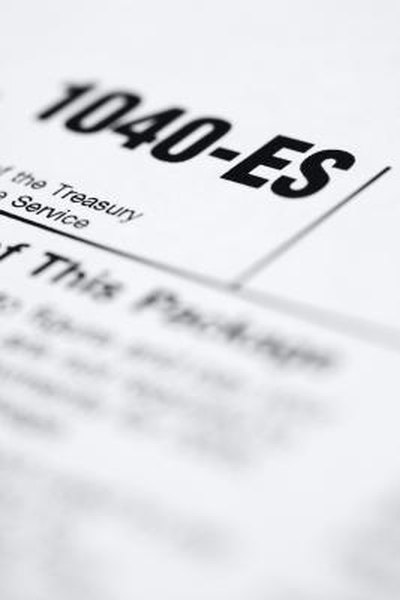Do Tax Brackets Change on a Weekly Basis?
Consult the appropriate IRS publication for your tax bracket and rate.
Thinkstock/Comstock/Getty Images
The United States Congress sets annual federal income tax brackets and tax rates; on that level, tax brackets do not change weekly. The Internal Revenue Service issues yearly publications that include federal tax brackets and the corresponding tax rates for employees and the self-employed. Your tax bracket can change, however, if your pay period or income or wages change.
Pay Period Change
As an employee, you are subject to federal income tax withholding. Your employer uses IRS Circular E tax withholding tables and your W-4 form to figure your withholding amount. The withholding tables are based on your wages, allowances, filing status and pay period. If your pay period changes to weekly then the weekly tax bracket applies.
Pay Period Example
Let’s say you claim married status on your W-4. Before your employer switched from a biweekly pay period to a weekly one, your biweekly wages after allowances were $2,000. As of 2013, for taxable wages over $1,006 and not over $3,108, a tax rate of 15 percent plus a flat rate of $68.70 applies to wages over $1,006; before the pay period change you fell in this bracket. Now that you are an employee paid weekly, your wages after allowances equal $1,000. For taxable wages over $503 and not over $1,554, a tax rate of 15 percent plus a flat rate of $34.30 applies to wages over $503. This is roughly half of what you paid as an employee paid biweekly, so in the end, it balances out.
Wage Change
If you’re paid weekly on a consistent basis, and your wages change, your tax bracket may also change. For example, say you receive salary and commission each week. Depending on the amount, your weekly tax bracket could change. This depends on whether the commission is paid with your regular salary or as a separate check. In the latter case, your employer may tax your commission at a flat 25 percent, as of 2013, and the tax bracket for your salary would stay the same. If they’re paid on the same check, depending on the commission amount from week to week, your weekly tax bracket may increase or decrease.
Self-Employment
As a self-employed person, if you foresee yourself owing over $1,000 when you file your tax return, you must make estimated tax payments to the IRS quarterly. If your company is a corporation, make estimated tax payments if you anticipate owing at least $500 when you file your return. Use IRS Form 1040-ES to figure your estimated tax amounts for federal income tax, Social Security tax and Medicare tax. The tax brackets and rates generally remain constant throughout the year, but they are not broken down by pay period, as with employees. Simply subtract your deductions from your gross income to arrive at your adjusted gross income. Then, apply the tax bracket and tax rate that goes with your adjusted gross income tax. As of 2013, you are taxed at 10, 15, 25, 28, 33, 35, or 39.6 percent of your adjusted gross income.
Considerations
If you must pay state income tax, consult the state revenue agency for applicable tax brackets and tax rates.
References
- IRS.gov: Early Release Copies of the 2013 Percentage Method Tables for Income Tax Withholding
- IRS.gov: Circular E, The Employer's Tax Guide
- Texas A&M University: 2013 Tax Issues That May Affect Employees
- Small Business Administration: How To Calculate and Make Estimated Tax Payments
- Tax Foundation: 2013 Tax Brackets
- IRS.gov: Form 1040-ES
Resources
Writer Bio
Grace Ferguson has been writing professionally since 2009. With 10 years of experience in employee benefits and payroll administration, Ferguson has written extensively on topics relating to employment and finance. A research writer as well, she has been published in The Sage Encyclopedia and Mission Bell Media.

